We are very familiar with concepts such as “smart home”, “smart city”. In order not to fall behind, we embark on a small prototype before the larger rollout. That’s when these problems appear, such as huge costs, difficulty to synchronize devices, security for data. These immediate issues are hindering the adoption of IoT strengths in device management. One solution is a “wireless sensor network” that can help us turn large areas into “smart”. In this article, you will find out why Wireless Sensor is IoT Security Solution.
1. What is a wireless sensor network?
1.1. Overview of wireless sensor networks
A wireless sensor network is a network of many sensor nodes arranged in different patterns, to monitor environmental conditions, such as temperature, sound, pressure, motion, vibration, pollution, or physical movements. They then cooperate to transmit the data over the network, to a place for analysis or storage [1]. You can see some of their configurations below.
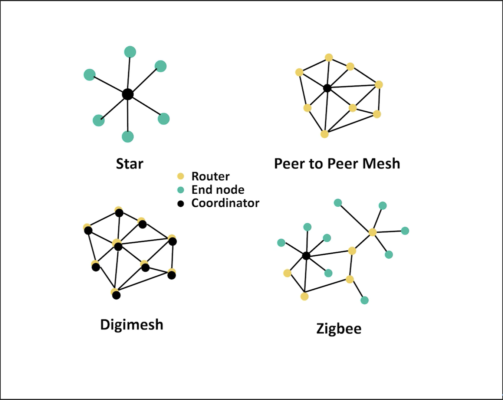
The main configuration types of wireless sensor networks. Source: Makerdemy (https://youtu.be/ZwjlONyV05Q)
There are two main types of sensor nodes, battery-powered or natural-powered, most of which use solar energy. The sensor nodes can only travel a few tens of meters, so the network nodes will forward the data from the sensors to the gateway from the cloud. Since it is a wireless sensor network, they will be communicated over the internet. Data in this network is transmitted in many steps to reach the destination [2].
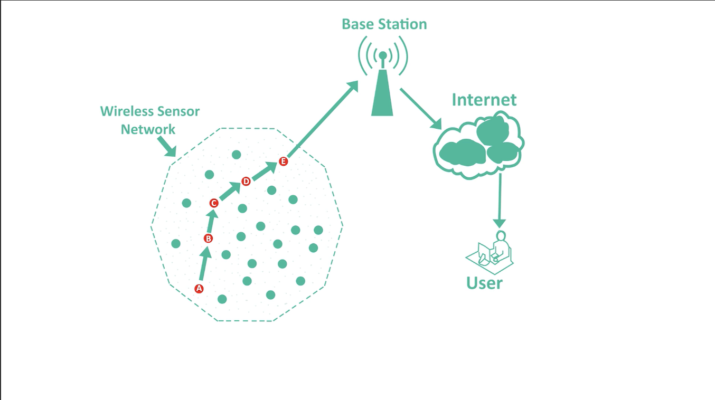 Source: Makerdemy (https://youtu.be/ZwjlONyV05Q)
Source: Makerdemy (https://youtu.be/ZwjlONyV05Q)
1.2 Benefits of wireless sensor networks
In this section we present the benefits in detail the benefits of this type of network [3]:
- Easy to install
So, with your use of a wired sensor network, installing a wireless sensor network brings more benefits. First of all, you don’t need to spend money on wires. You also have no limitations in installing wireless sensors because it’s simple, you can place them anywhere.
- Optimal cost
Installation costs may be more expensive than if you installed a wired system, but when maintaining or expanding the system, costs are optimized when you use a wireless sensor network
- Easy maintenance
In addition to saving on maintenance fees, thanks to the battery- or solar-powered sensors, energy maintenance for them is easy. When a node fails, you only need to replace it, thanks to the nature of this network that the nodes work independently of each other and only connect wirelessly.
- Security
These network application projects are those that put security first. From smart home to the commercial center, government office, or a smart city. Thanks to the internet connection which is the evolution of wireless networks like 5G technology, data is transmitted with low bandwidth and high speed allowing us to implement many effective security measures. We will clarify this part more later in the article.
- High flexibility and scalability
Wireless sensor networks have never been used only for large areas. They are just superior to other types. If you want to set it up for your office, it is quite possible that the model type has a lot of flexibility. When expanding, you simply add the node at the position you want.
Let’s take a look at some real-life examples.
1.3. Real life example of wireless sensor network
- Military surveillance and tracking system
VigilNet [4] is a wireless sensor network for the military that collects information about enemy capabilities and the location of enemy targets. It is being used by the US Defense Intelligence Agency.
- Smart home
This concept is no longer strange to the majority. Thanks to IoT devices and well-designed wireless sensor networks, we can optimize our homes.
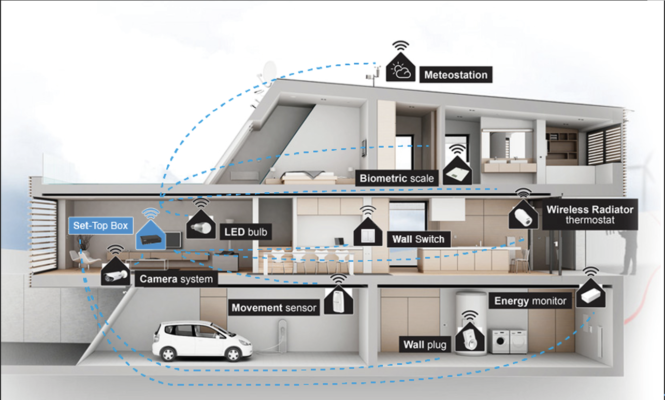 Source: Antiktech (http://www.antiktech.sk/en/digital-signagebr–smart-home/smart-home)
Source: Antiktech (http://www.antiktech.sk/en/digital-signagebr–smart-home/smart-home)
- Smart city
Libelium’s project demonstrates the wide application of wireless sensor networks to urban activity. More than 20 types of sensors across the city show the superiority of this network [5].
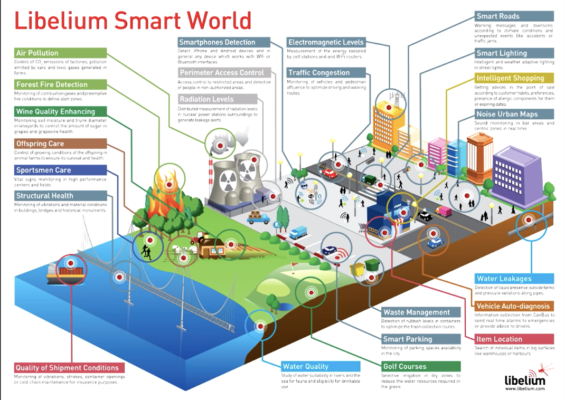
Source: Libelium (https://youtu.be/urWv-_EqS9M)
2. Why Wireless Sensor is IoT Security Solution
IoT devices that are quickly connected to an IoT network bring great benefits. One of their obstacles is security. The easy connection makes IoT devices vulnerable to attacks, especially when they carry a lot of important information from private security information to confidential information of agencies and organizations.
Wireless sensor networks can be considered an effective method for IoT security. Here is an explanation for this statement.
- Smart sensor buttons
Nowadays, sensor buttons are designed more and more intelligently, able to perform more sophisticated operations. They can encrypt data and disable data access when attacked
- Benefits from 5G networks
The evolving wireless network allows data to be transmitted quickly and with low latency. Any network attack can be quickly recognized and the system disables the attacked node with the rest of the nodes making the risk of data loss no longer possible.
- Combined with many other security methods
Security is vital, so IoT devices or cloud providers are increasingly perfecting their security capabilities. As a result, security and wireless sensor networks become more secure, multi-layered security.
It is not possible to confirm that wireless sensor networks completely eliminate the risk of IoT devices from being attacked, but they are really an effective security method, with low maintenance costs but outstanding efficiency.
3. The embodiment of the future
Wireless sensor networks exist somewhere around you, right now. In the future, this model will continue to evolve, meeting our progressive needs. As a way to prepare for the smart future, understanding technology is the first step towards mastering it. If you care about security, a wireless sensor network is a great suggestion for you to turn threats into advantages for your model.
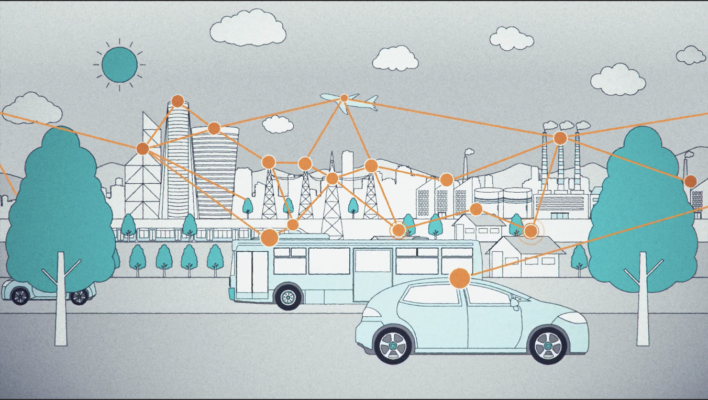 The future of wireless sensor networks is everywhere. Source: Toshiba (https://youtu.be/W1aMmCZ25fw)
The future of wireless sensor networks is everywhere. Source: Toshiba (https://youtu.be/W1aMmCZ25fw)
